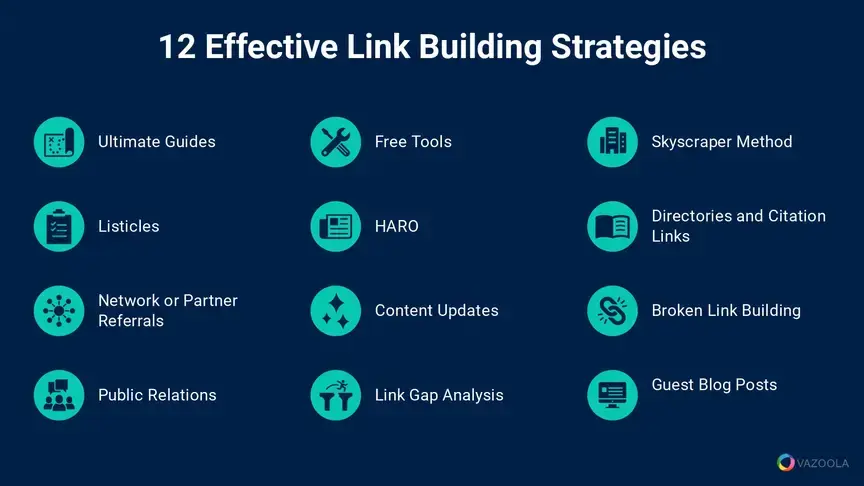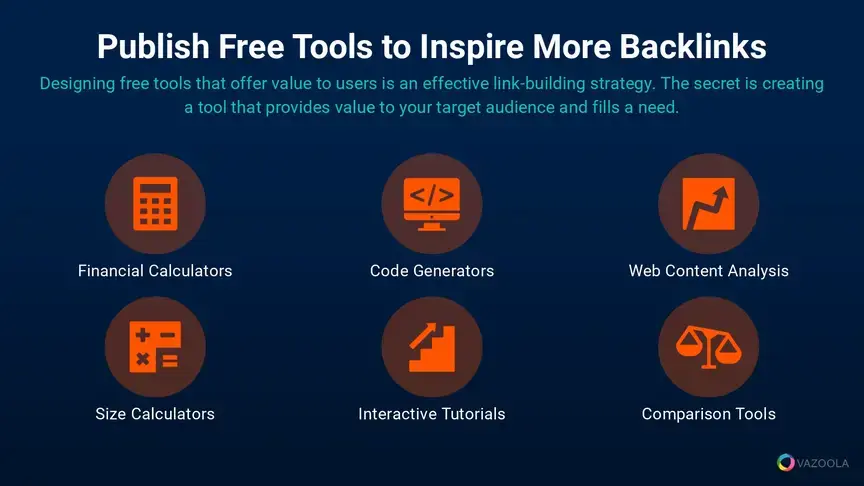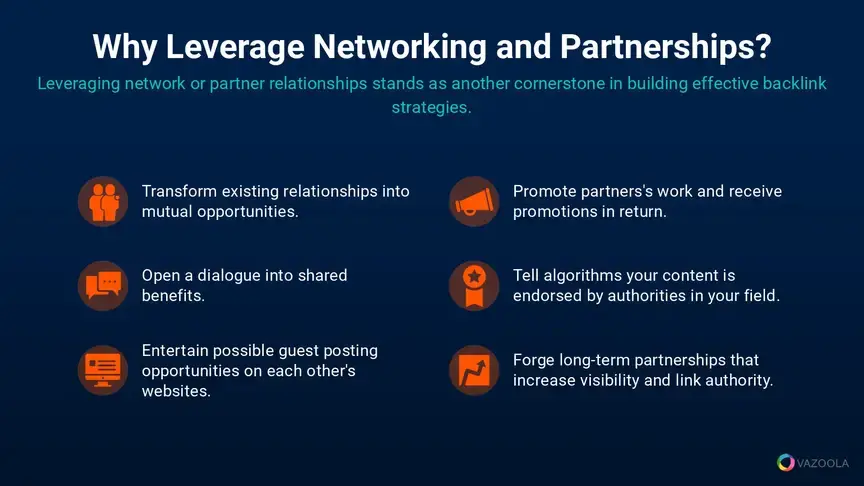Unlock the secrets of building backlinks with expert strategies and tools to boost your website’s SEO and visibility.

Image courtesy of via DALL-E 3
Table of Contents
Welcome to our guide on how to find backlinks, a crucial element in boosting your website’s visibility and search engine ranking. In simple terms, backlinks are like recommendations or votes from other websites that signal to search engines that your content is valuable and trustworthy. In this article, we will explore proven strategies and tools to help you secure valuable backlinks for your website.
What Are Backlinks?
Backlinks are links from one website to another. For example, if you have a blog and link to your friend’s blog, that’s a backlink. It’s like saying, “Hey, check out this cool blog I found!” Backlinks help search engines understand the relevance and authority of your content.
Why Are Backlinks Important?
Imagine backlinks as gold stars in school. The more gold stars you have, the better your grade. Similarly, the more quality backlinks your website has, the higher it ranks in search engines. Backlinks are a vote of confidence from other websites that your content is worth sharing.
Overview of the Article
In this article, we will delve into different types of backlinks, proven strategies to acquire them, useful tools to assist you in the process, leveraging Google for backlink opportunities, creating link-worthy content, tracking and analyzing your backlinks, managing bad backlinks, and addressing common FAQs about backlinks. By the end, you’ll have a solid understanding of how to find and maximize the potential of backlinks for your website’s SEO.
Understanding Different Types of Backlinks
Do-Follow Vs No-Follow Backlinks
Do-follow backlinks are like giving a thumbs up to a website, telling search engines that the linked website is trustworthy and should be ranked higher. On the other hand, no-follow backlinks are like saying, “Check this out, but don’t give it too much importance.” They don’t pass on any ranking power to the linked site.
Natural Backlinks
Natural backlinks are like when your friend recommends a cool game to you because they genuinely like it. Websites link to each other without any asking or effort because they find the content valuable and want to share it with their audience.
Manual Backlinks
Manual backlinks are like making new friends at school by joining a club. You actively reach out to other websites by guest posting, commenting, or asking for links to improve your own site’s visibility and ranking.
Proven Strategies to Find Backlinks
One of the best ways to get backlinks is through guest posting. This means writing articles for other websites and including a link back to your own site. It’s like showing your friend’s blog to your classmates so they can visit and see your work.
Broken Link Building
If you come across broken links on other websites, you can offer to fix them by replacing them with your own link. This is a great way to get backlinks while helping website owners improve their content.
Reach Out to Bloggers and Influencers
You can also reach out to bloggers and influencers in your niche and ask them to link to your content. It’s like asking a popular student to recommend your work to others, helping you get more recognition.
Using Social Media
Promoting your content on social media platforms can also help you get backlinks. When people see your posts and like them, they may decide to share your content on their own websites, giving you valuable backlinks.
Best Tools to Help You Find Backlinks
If you’re looking for a powerful tool to assist you in finding and monitoring backlinks for your website, Ahrefs is your go-to tool. It offers comprehensive features that allow you to analyze your website’s backlink profile, track your competitors’ backlink strategies, and discover new link building opportunities.

Image courtesy of www.vazoola.com via Google Images
SEMRush
SEMRush is another excellent tool for finding backlinks and conducting competitive analysis. With SEMRush, you can identify valuable backlink sources, track your link building progress, and gain insights into your competitors’ backlink strategies.
Moz Link Explorer
Moz Link Explorer is a reliable tool for discovering backlink opportunities. It provides detailed insights into your backlink profile, helps you identify high-quality backlink sources, and offers suggestions for improving your link building efforts.
Using Google for Backlink Opportunities
Google is not just for finding information; it can also help you uncover potential backlink opportunities for your website. By using some simple search tricks, you can find websites that might be interested in linking to your content.
Looking for Resource Pages
One way to find backlink opportunities is by searching for resource pages within your niche. These pages typically compile useful links on a specific topic, making them a great place to request a backlink for your valuable content. By searching for resource pages related to your content, you can identify websites that may be willing to link back to your site.
Creating Link-Worthy Content
When it comes to backlinks, one of the most important factors to consider is the quality of your content. Creating link-worthy content is crucial in attracting valuable backlinks from other websites. Here are some tips to help you make your content appealing to others for linking:

Image courtesy of www.vazoola.com via Google Images
Make Your Content Valuable
Valuable content is content that provides something unique, informative, or entertaining to the readers. Consider what sets your content apart from others in your niche. Whether it’s a new perspective, in-depth research, or valuable tips, make sure your content offers something that others will find worth linking to.
Use Visuals and Infographics
Visual elements like images, videos, and infographics can make your content more engaging and shareable. These visuals not only break up the text and make your content easier to consume but also increase the likelihood of others linking to your content. Infographics, in particular, are known to be highly shareable and can attract backlinks from websites looking to reference data in a visual format.
Tracking and Analyzing Your Backlinks
Once you start acquiring backlinks for your website, it’s essential to track and analyze them to understand their impact on your site’s SEO. By monitoring your backlinks, you can identify which ones are helping your site and which ones may be harmful. Let’s delve into how you can effectively track and analyze your backlinks.
Monitoring Your Backlink Profile
Regularly checking your backlink profile is crucial to ensuring that your website’s link profile remains healthy. Tools like Ahrefs, SEMRush, and Moz provide features that allow you to monitor the backlinks pointing to your site. By keeping track of new backlinks and changes in your backlink profile, you can stay informed about your site’s link-building progress.
Assessing the Quality of Backlinks
Not all backlinks are created equal. It’s essential to assess the quality of the backlinks you’re acquiring to ensure they are beneficial to your site’s SEO. Look for backlinks from reputable and relevant websites in your industry. Consider factors like domain authority, relevance, and anchor text when evaluating the quality of your backlinks. High-quality backlinks can help improve your site’s search engine rankings, while low-quality backlinks can potentially harm your SEO efforts.
Managing Bad Backlinks
Having backlinks is crucial for your website’s SEO, but not all backlinks are good. Some backlinks can actually harm your site’s rankings. Let’s learn how to deal with bad backlinks.

Image courtesy of www.vazoola.com via Google Images
Identifying Bad Backlinks
Bad backlinks are usually spammy, irrelevant, or low-quality links coming from suspicious websites. These backlinks can signal to search engines that your site is not trustworthy, which can result in lower rankings.
Using Google Disavow Tool
If you’ve identified bad backlinks pointing to your website, don’t worry! Google offers a tool called the Disavow Tool that allows you to tell Google to ignore those links when assessing your site’s ranking. It’s like telling Google, “Hey, these backlinks are not legit, please don’t count them against my site.”
Want to turn these SEO insights into real results? Seorocket is an all-in-one AI SEO solution that uses the power of AI to analyze your competition and craft high-ranking content.
Seorocket offers a suite of powerful tools, including a Keyword Researcher to find the most profitable keywords, an AI Writer to generate unique and Google-friendly content, and an Automatic Publisher to schedule and publish your content directly to your website. Plus, you’ll get real-time performance tracking so you can see exactly what’s working and make adjustments as needed.
Stop just reading about SEO – take action with Seorocket and skyrocket your search rankings today. Sign up for a free trial and see the difference Seorocket can make for your website!
FAQs
What is a Backlink?
A backlink is like a digital referral where one website links to another. It’s like when you recommend a cool toy to your friend, but on the internet!
How Much Can Backlinks Help My Website?
Backlinks are super important for your website because they act like votes of confidence. The more quality backlinks you have, the higher your website can climb in search engine rankings, like earning extra gold stars in school!
Are All Backlinks Good?
No, not all backlinks are good. Some backlinks can actually hurt your website’s reputation in the eyes of search engines. Good backlinks come from trustworthy sites, while bad backlinks might be spammy or low-quality.
How Often Should I Check My Backlinks?
It’s a smart idea to check your backlinks regularly to make sure they’re helping, not harming, your website. Checking every month or so can keep your website healthy and ranking well in search results.







